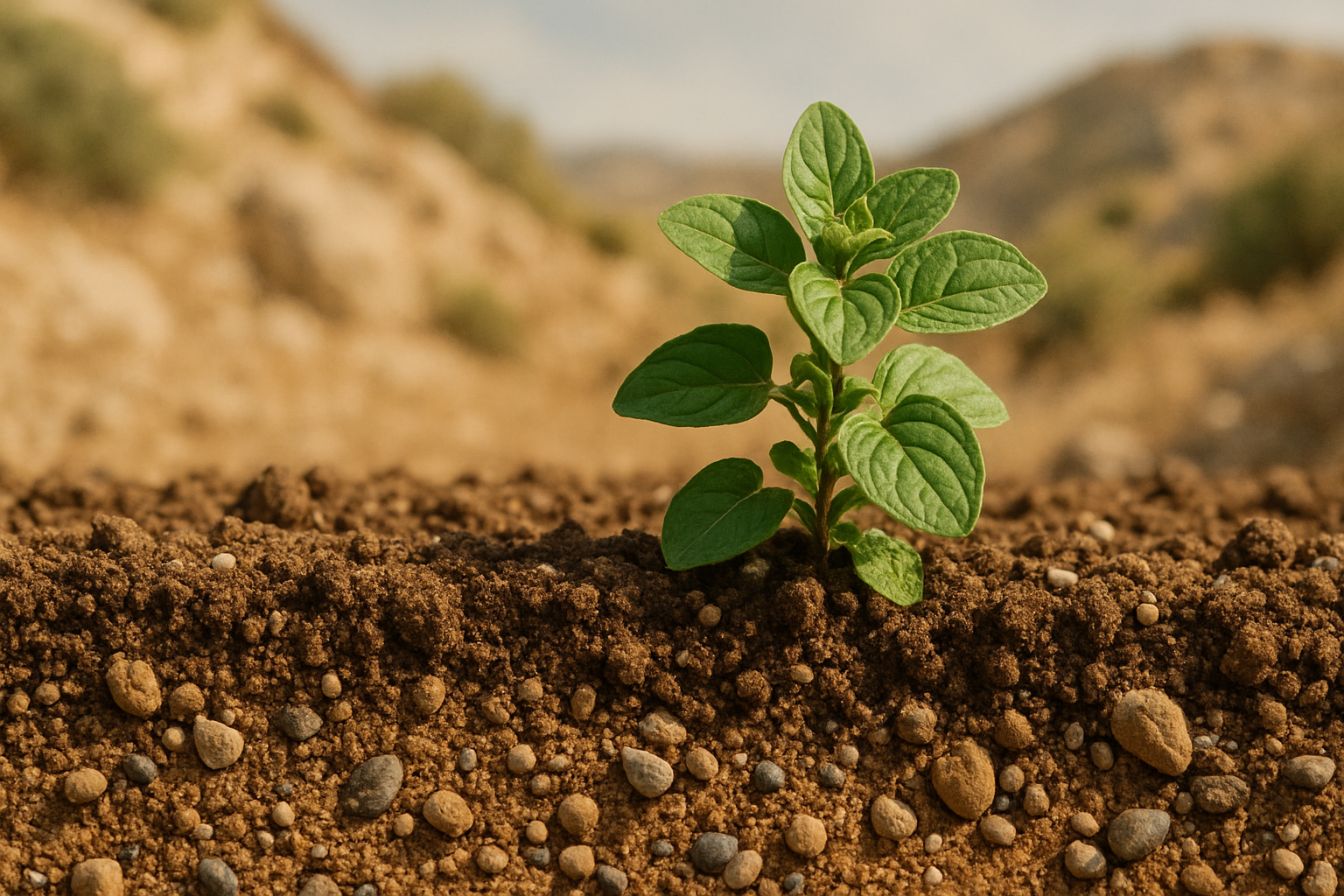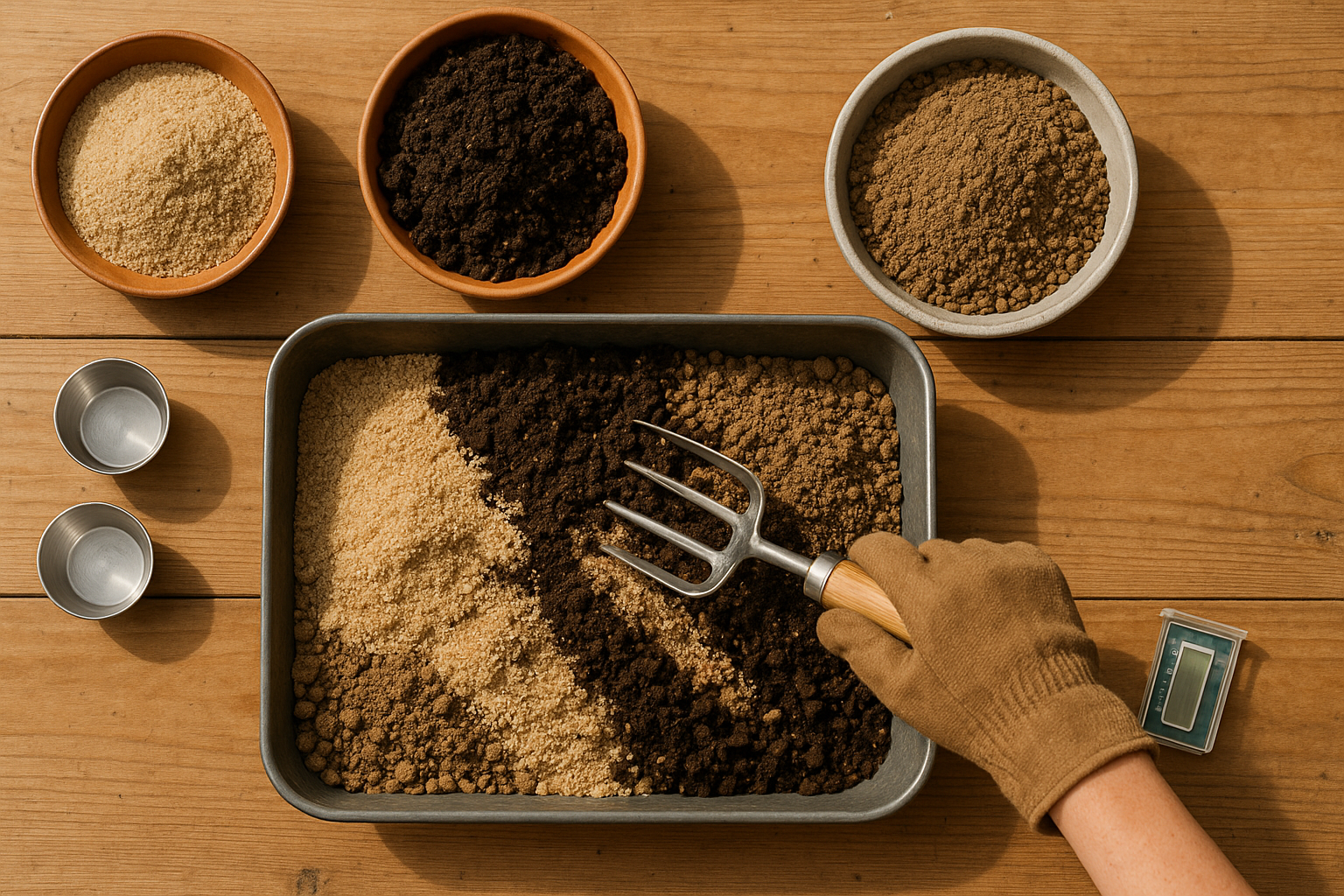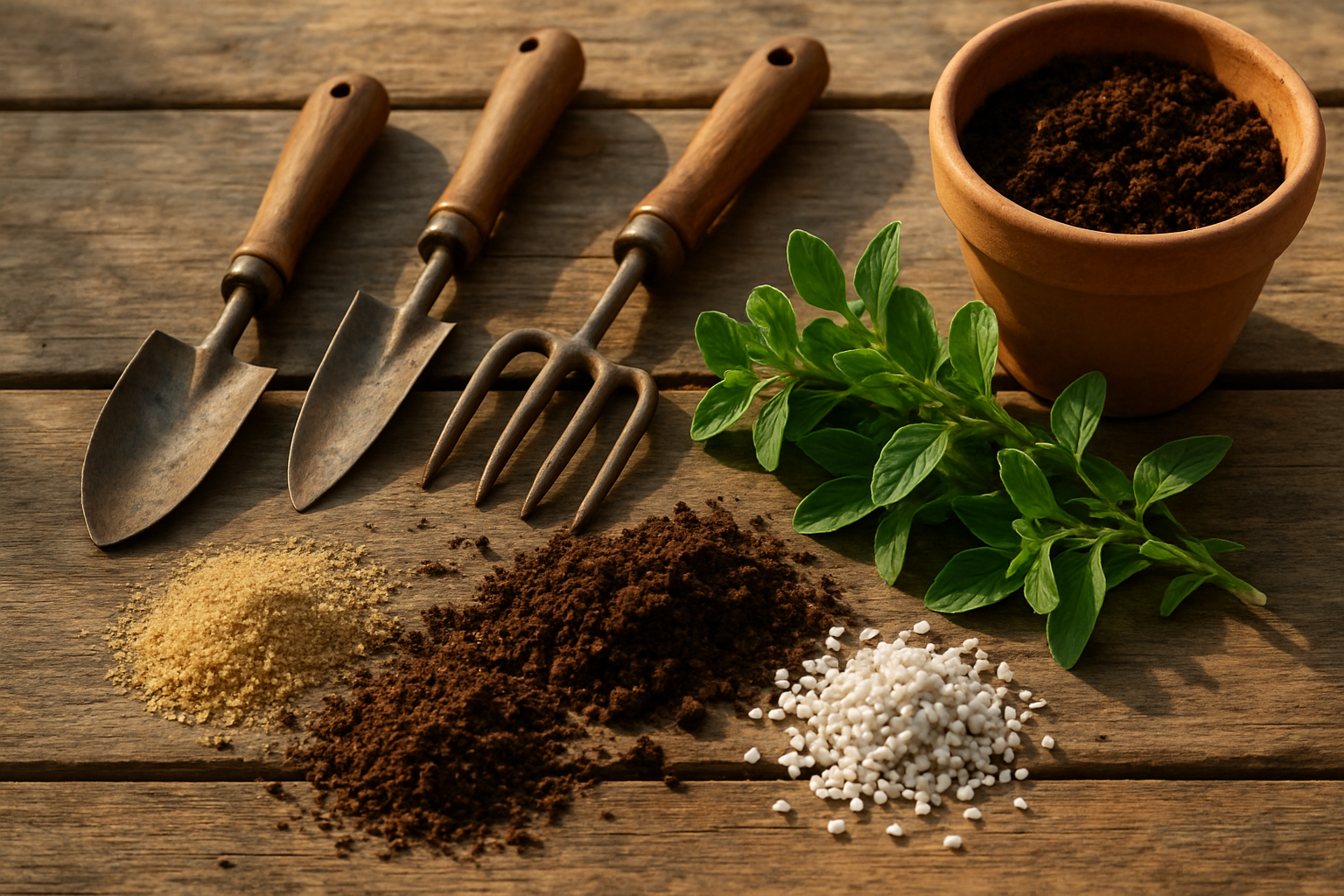Introduction
If you’re on a quest to discover the best soil for oregano, you’re already one step closer to vibrant, flavorful herbs in your kitchen. Oregano is cherished in the culinary world for its robust flavor and impressive resilience, making it a staple for home cooks and gardeners alike. Yet, even this hardy aromatic herb can struggle if the soil beneath it isn’t quite right.
The right soil is more than just dirt—it’s the foundation that supports your oregano, providing essential nutrients, proper drainage, and the ideal texture for root growth. While oregano can tolerate a bit of neglect, its flavor, leaf growth, and overall health truly shine when planted in an environment tailored to its Mediterranean roots.
In the rest of this article, we’ll explore simple, actionable tips to help you select or amend the best soil for oregano. From choosing the right mix of sand, compost, and perlite to avoiding common pitfalls like waterlogged roots, you’ll learn exactly what your oregano needs to thrive. Whether you’re growing oregano in garden beds, raised planters, or a windowsill pot, these real-world tips will help you enjoy a lush, aromatic harvest all season long.
Key Soil Properties for Oregano Success

Oregano thrives in the wild Mediterranean climate, often pushing its roots into rocky, sun-soaked slopes with sparse, gritty soil. For gardeners, this means oregano isn’t fussy but actually prefers conditions that many other herbs would find challenging.
The key is to provide soil that mimics its native habitat: well-draining and composed of sandy or loamy textures. Heavy clay soils, which hold onto water and easily compact, can lead to root rot and stunted growth, so they’re best avoided. If your garden has clay-heavy earth, mix in generous amounts of sharp sand, perlite, or fine gravel to boost drainage and aeration.
Oregano also appreciates a soil pH in the slightly alkaline to neutral range, ideally between 6.5 and 7.5—this helps promote healthy growth and intensely flavored leaves. Test your soil before planting and add a touch of garden lime if it’s too acidic.
While it might seem logical to fertilize herbs generously for lush growth, oregano is the exception; too much fertility, especially high nitrogen, can produce overly leafy plants with mild, diluted flavor—exactly what you don’t want in the kitchen. Lightly amended soil with just a hint of organic compost at planting time is enough.
In fact, oregano’s resilience means it often excels in spots where other edibles struggle, so look for neglected, sandy patches in your yard or use raised beds with DIY Mediterranean-inspired soil blends. By replicating oregano’s rugged homeland, you’ll harvest the most aromatic and robust leaves from your garden.
DIY Soil Mix

Creating the right soil mix is key to growing healthy oregano, whether you’re planting in a garden bed or a pot. For a simple and effective DIY recipe, blend two parts garden soil, one part coarse sand, and one part compost. This combination provides good drainage and plenty of nutrients—important because oregano dislikes soggy roots but thrives in rich, crumbly soil.
If you’re working with heavy or clay soils in your garden, start by loosening the area with a garden fork or spade, then mix in generous amounts of coarse sand and organic compost to improve drainage and structure. Gypsum can also help break up clay without harming soil pH.
For containers or pots, opt for a high-quality cactus or Mediterranean-style potting mix—these are usually available at garden centers and drain well. If using regular potting soil, lighten it up by adding extra sand or perlite, aiming for a gritty texture.
To check your soil’s drainage, dig a small hole, fill it with water, and time how long it takes to drain—ideally, water should drain within an hour. If it pools or drains slowly, mix in more sand or perlite and compost as needed. Regularly aerate the soil around established oregano to prevent compaction.
With a loose, well-draining soil mix, your oregano plants will stay healthy and productive, whether indoors or out.
Where to Grow Oregano
Oregano is a versatile herb that adapts well to various growing environments, from garden beds to pots and even sunny indoor spots. Each setup offers its own benefits and challenges.
Growing oregano in traditional garden beds provides ample space for roots to spread, helping the plant establish a strong network—especially if the soil is loose and deep. On the other hand, compact or shallow soil can stunt root growth and reduce the plant’s overall health.
Raised beds are another excellent option, combining good drainage with better soil control. Just make sure the beds are at least 8-12 inches deep and filled with crumbly, well-aerated soil to support robust roots and prevent waterlogged conditions.
Containers work well for patios, balconies, or small spaces, but they tend to dry out faster and may require more frequent watering. Choose a pot with drainage holes and fill it with a mix designed for herbs or vegetables.
Indoors, oregano thrives on a sunny windowsill that receives at least six hours of direct sunlight daily—south-facing windows are ideal. Use a light, well-draining potting mix, and fluff the soil occasionally to prevent compaction. Avoid pressing the soil down when potting.
To keep soil healthy, water only when the top inch feels dry and fertilize lightly once a month. Drainage is key in any setup: soggy conditions lead to root rot, while well-drained soil encourages strong, healthy plants.
With attention to soil depth, looseness, and sunlight, you can enjoy fresh oregano leaves whether you have a sprawling backyard, a raised bed, a balcony pot, or a bright kitchen window.
Ongoing Soil Care
Proper soil care is the foundation for healthy oregano, and a light touch makes all the difference. Oregano naturally thrives in dry-to-moderate moisture, so resist the urge to overwater—let the top inch of soil fully dry before watering again.
Pots with drainage holes are a must, and for in-ground plants, avoid heavy clay soils that hold water. When it comes to mulching, choose loose, airy materials like pine needles, fine bark, or gravel. Dense mulches such as thick wood chips or straw can trap excess moisture and suffocate the roots, leading to root rot.
Feed oregano sparingly—a light sprinkle of compost or a diluted organic fertilizer (such as fish emulsion or balanced liquid feed) just once in early spring is usually all that’s needed. Too much fertilizer can diminish the plant’s signature flavor and encourage weak growth.
If you’re growing oregano in containers, refresh the potting soil at the start of each season: carefully remove about a third of the old soil, replace it with fresh, high-quality potting mix, and loosen compacted roots. This step helps keep the soil airy and reduces the risk of diseases building up over time.
For gardeners in humid climates, consider lifting and turning the top layer of soil occasionally to ensure good airflow and help prevent fungal issues. By balancing moisture, choosing smart mulching strategies, feeding lightly, and keeping soil refreshed, you’ll create the perfect environment for oregano to flourish and deliver its best flavor.
Common Soil Problems and Fixes for Oregano Growers
Oregano growers often face a few stubborn soil challenges, but with the right approach, your plants can thrive.
Poor drainage is a common culprit, especially if oregano leaves turn yellow or growth slows. To fix this, mix coarse sand or perlite into your garden bed or potting soil to improve aeration.
If your soil feels hard or compacted, try double-digging your garden spot or gently loosening soil around container plants—roots need room to breathe!
Acidic soil can also stress oregano; run a cheap soil pH test (widely sold at garden centers) and aim for a pH between 6.0 and 8.0. A sprinkle of garden lime can help raise low pH quickly.
Soil-borne diseases, like fungal wilt, may show as drooping leaves or stunted growth. Rotating your oregano’s location every year and avoiding overwatering are simple preventive steps.
For struggling oregano in pots, repotting often helps—gently remove the plant, shake off old soil, and replant in fresh, well-draining mix. Make sure the container has drainage holes and consider a slightly larger pot if roots look cramped.
With these troubleshooting tips, even beginners can solve soil woes and enjoy robust oregano plants.
Conclusion
Growing truly aromatic, robust oregano starts with one simple foundation: the right soil. Oregano thrives in well-draining, moderately fertile soil with a pH between 6.0 and 8.0, so aim for a sandy or loamy mix that never stays soggy.
Good drainage is key—roots sitting in water will quickly lead to a sad, wilted plant. If your garden soil is clay-heavy or too dense, mix in some sand or perlite to lighten it. A little compost also goes a long way, boosting both nutrients and flavor intensity without making the soil too rich.
Remember, oregano’s best oils and flavors develop when plants aren’t spoiled with excess fertilizer. Test different amendments or create your own potting blends, and don’t hesitate to experiment. Growing oregano in containers gives you even more control—plus, moving pots into the sunniest spot means even more luscious leaves.
Every garden is unique, so trust your senses: check moisture by touch, notice how the leaves respond, and adjust as you go. Share what works—and what doesn’t—with fellow gardeners, because your triumphs and experiments can help others coax out the best flavors from their own oregano plants.
With a thoughtful approach to soil, your oregano will reward you with healthy growth and unforgettable taste.
